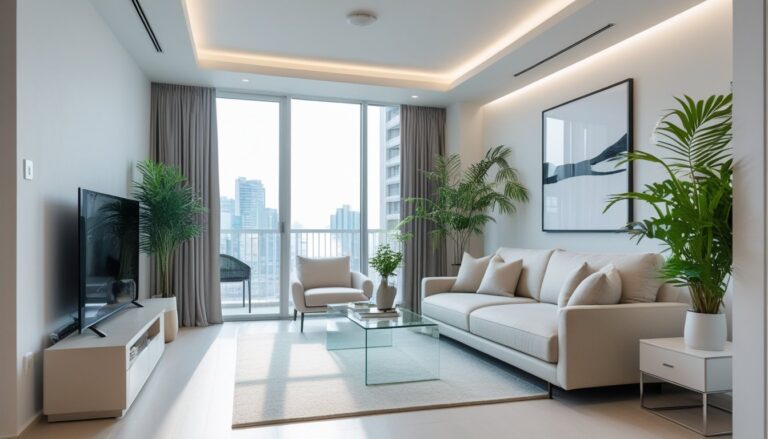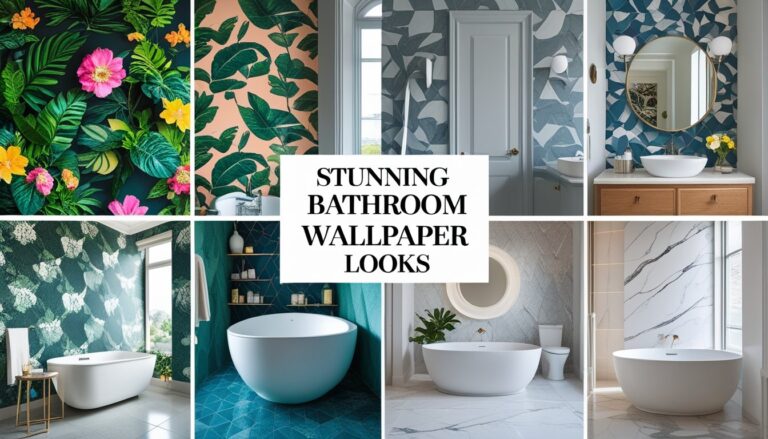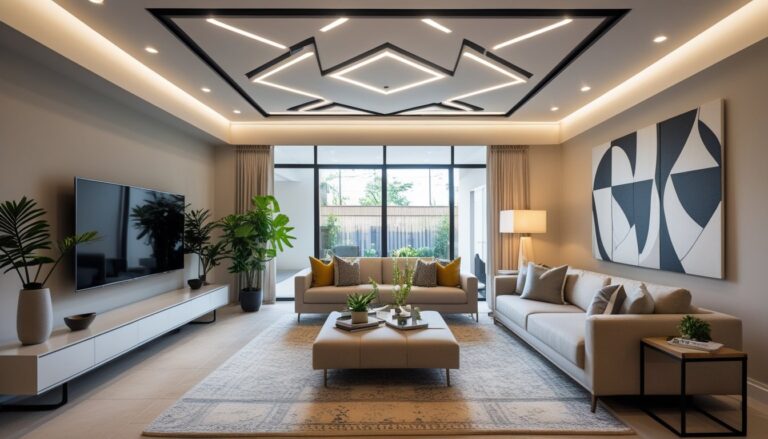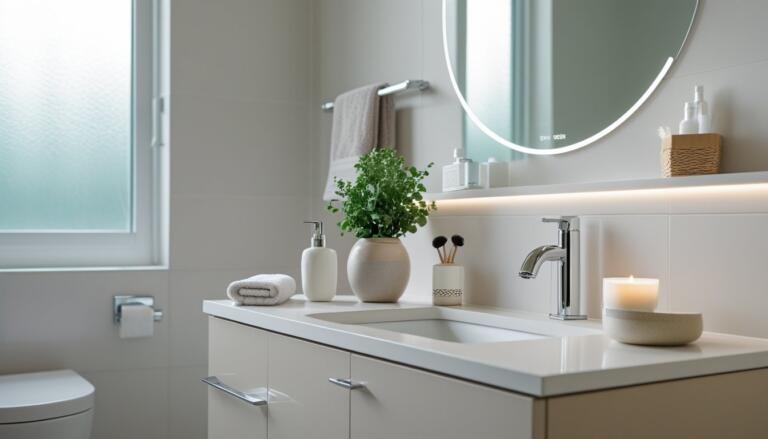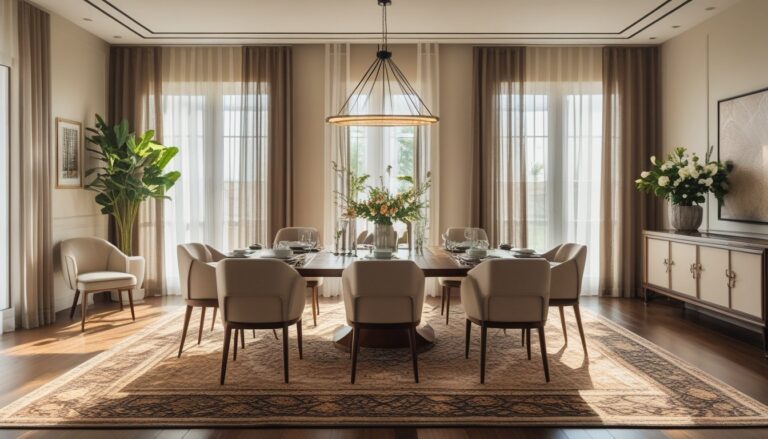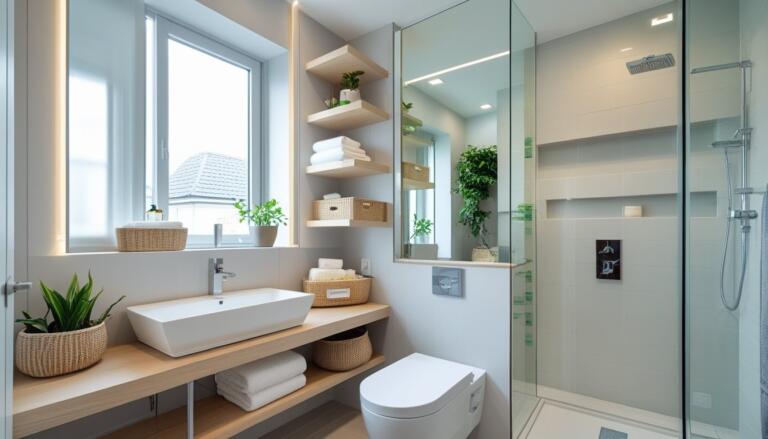Small Living Room With Dining Area Ideas: 7 Practical Solutions
Many people face the challenge of fitting both a living room and dining area into a small space. Combining these two functions in one room requires careful planning to make the most of limited square footage.
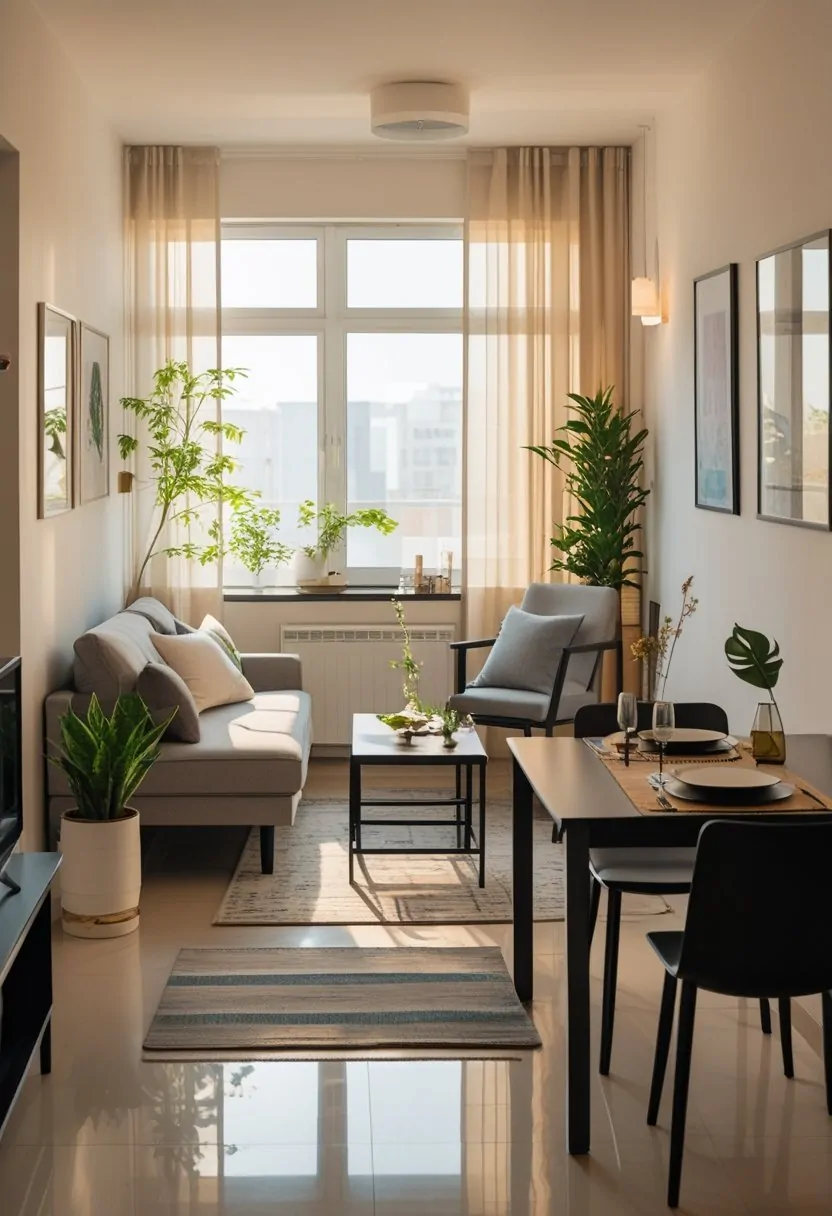
The key to designing a small living room with a dining area is to create a space that feels both functional and comfortable without overcrowding. With smart choices in furniture and layout, it is possible to have a stylish and practical area for both relaxing and eating.
1) Use a sleek modern dining table to save space
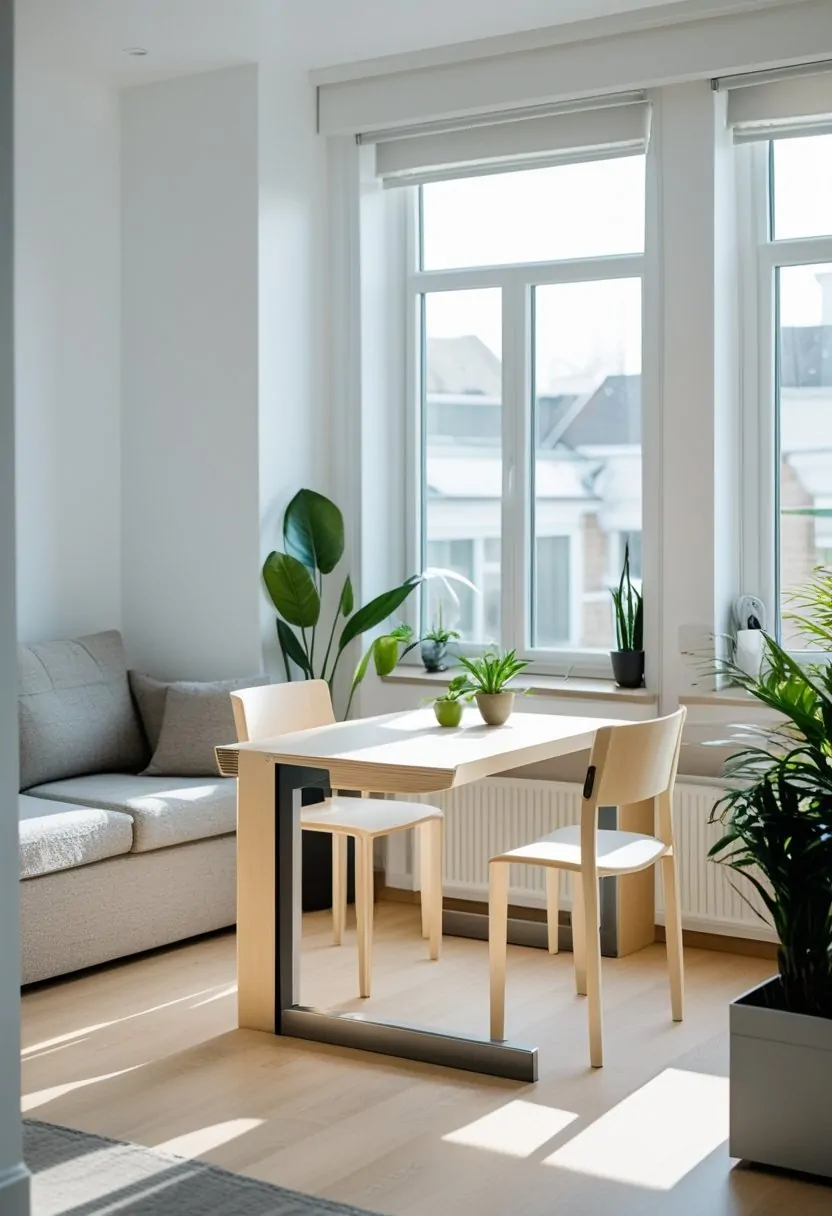
A sleek modern dining table helps keep a small living room open and uncluttered. Its simple design takes up less visual space.
Choosing a foldable or extendable table adds flexibility for dining or working. It can expand for guests and shrink when not needed.
Materials like metal or slim wood frames blend well with most décor. This choice maximizes function without overcrowding the room.
2) Incorporate light colors to make the area feel open
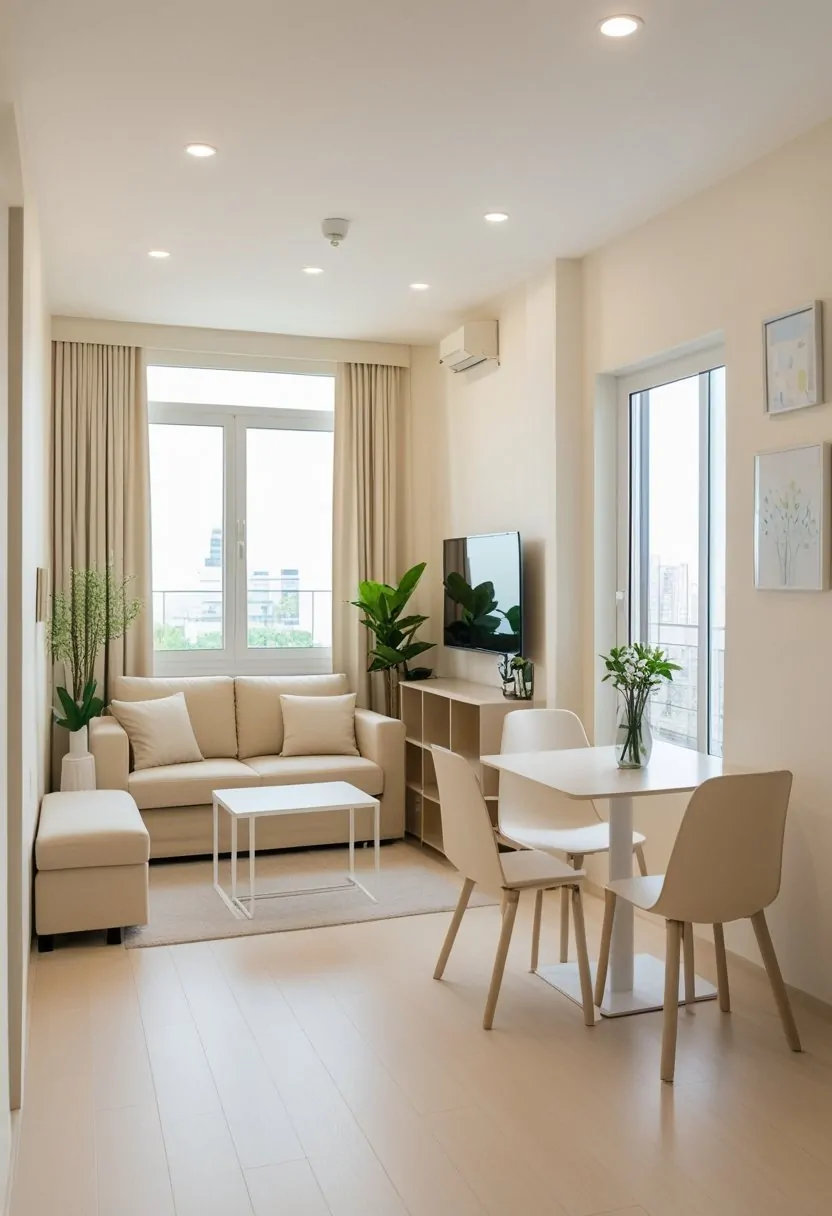
Light colors help make a small living room with a dining area look larger. Soft neutrals, pastels, or light shades reflect more light, creating a bright and airy atmosphere.
Using a consistent light color palette ties the living and dining spaces together. This approach keeps the area feeling open and connected without visual clutter.
3) Use rugs or flooring changes to define zones
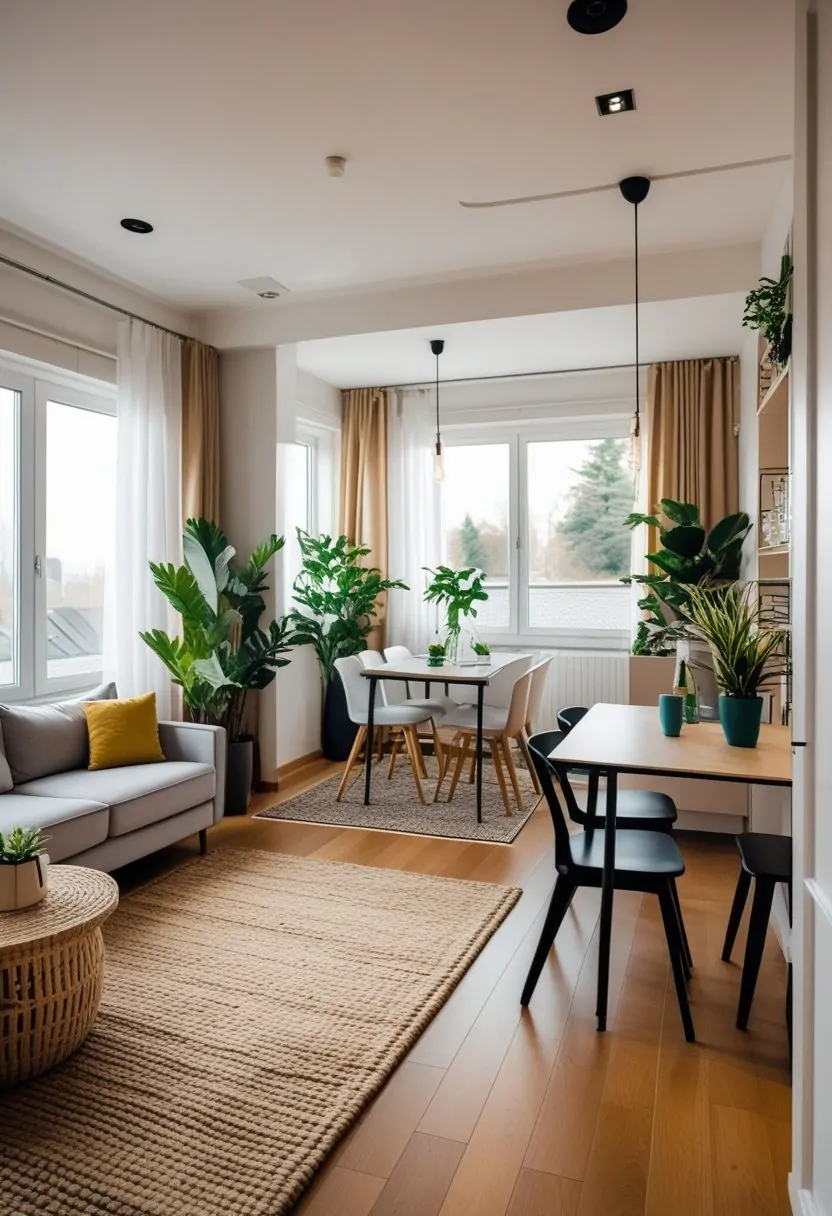
Rugs help create clear boundaries between living and dining areas in a small space. A different rug under the dining table sets it apart from the seating area.
Changing flooring materials can also separate zones without walls. For example, hardwood in the living room and tile in the dining area signal different functions.
Layering rugs allows smooth transitions between zones. A large neutral rug with smaller patterned ones can connect spaces while keeping them distinct.
4) Choose multi-functional furniture like foldable tables
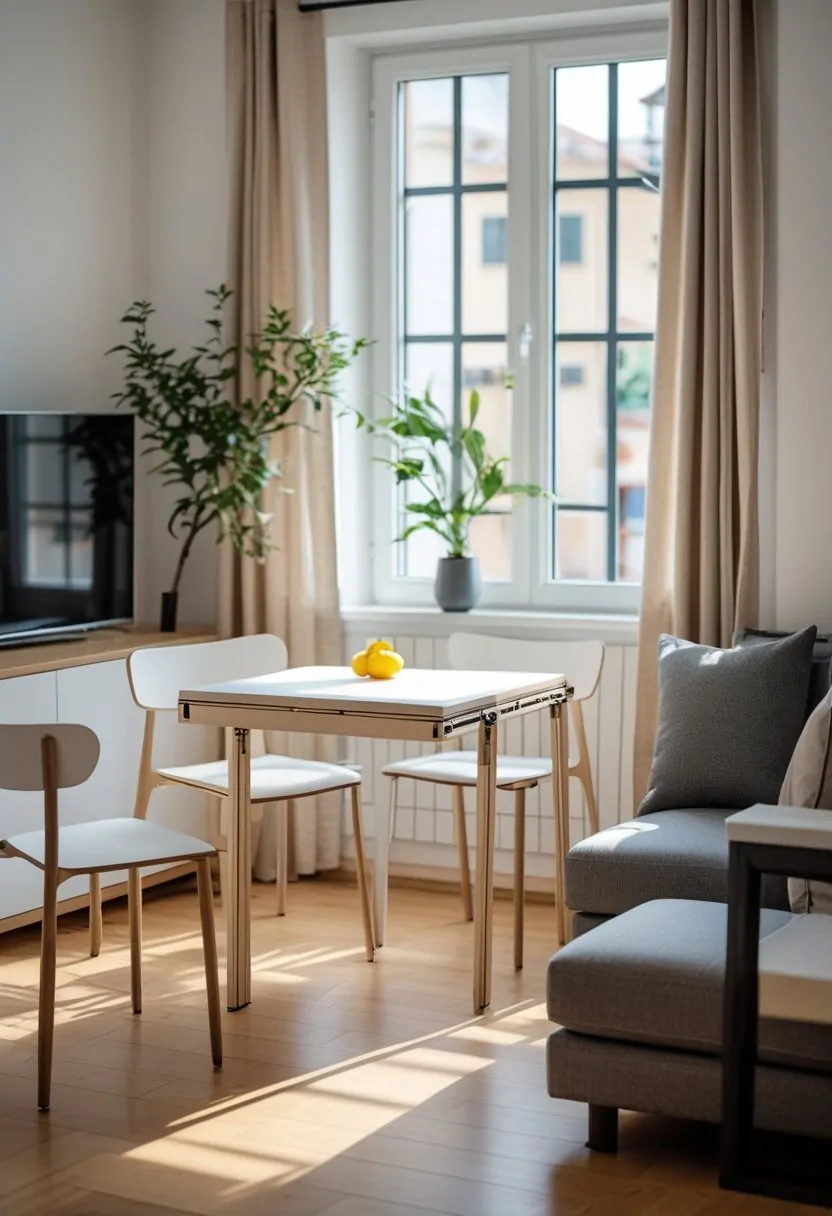
Foldable tables save space when not in use. They can be expanded for dining or work and folded away to keep the area open.
Many foldable tables have extra features like built-in storage or wheels. These help move the table easily and store items neatly.
Choosing multi-functional furniture helps create a flexible living and dining space without crowding the room. It makes small areas feel more organized and practical.
5) Opt for natural materials for a cozy vibe
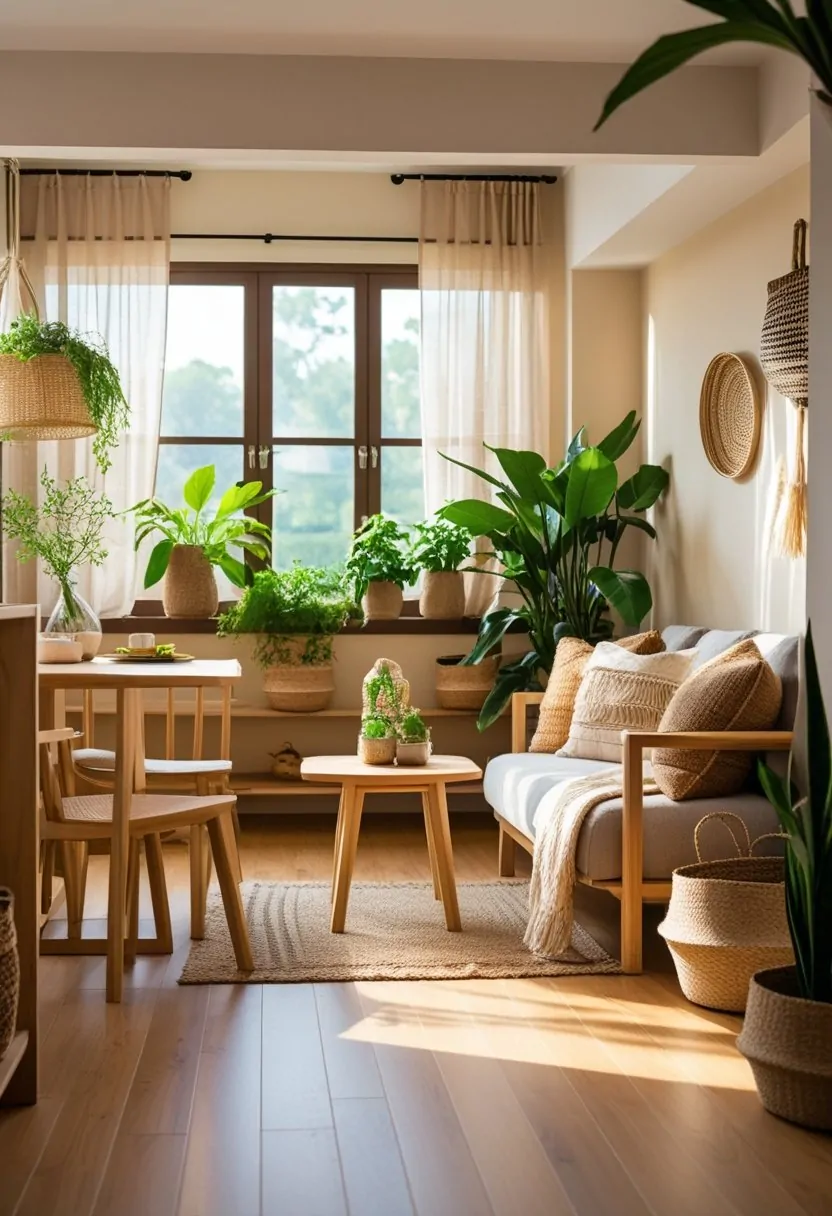
Using natural materials like wood, stone, and woven fibers adds warmth to a small living room with a dining area. These elements create a grounded, inviting feel that makes the space more comfortable.
Wooden furniture and jute rugs bring texture without overwhelming the room. Stone accents or wooden beams can serve as subtle focal points, enhancing the cozy atmosphere.
Natural materials also help blend the living and dining zones, keeping the design unified and calm. Light earthy tones from these materials support a relaxed, organic look.
6) Limit decor pieces to avoid clutter
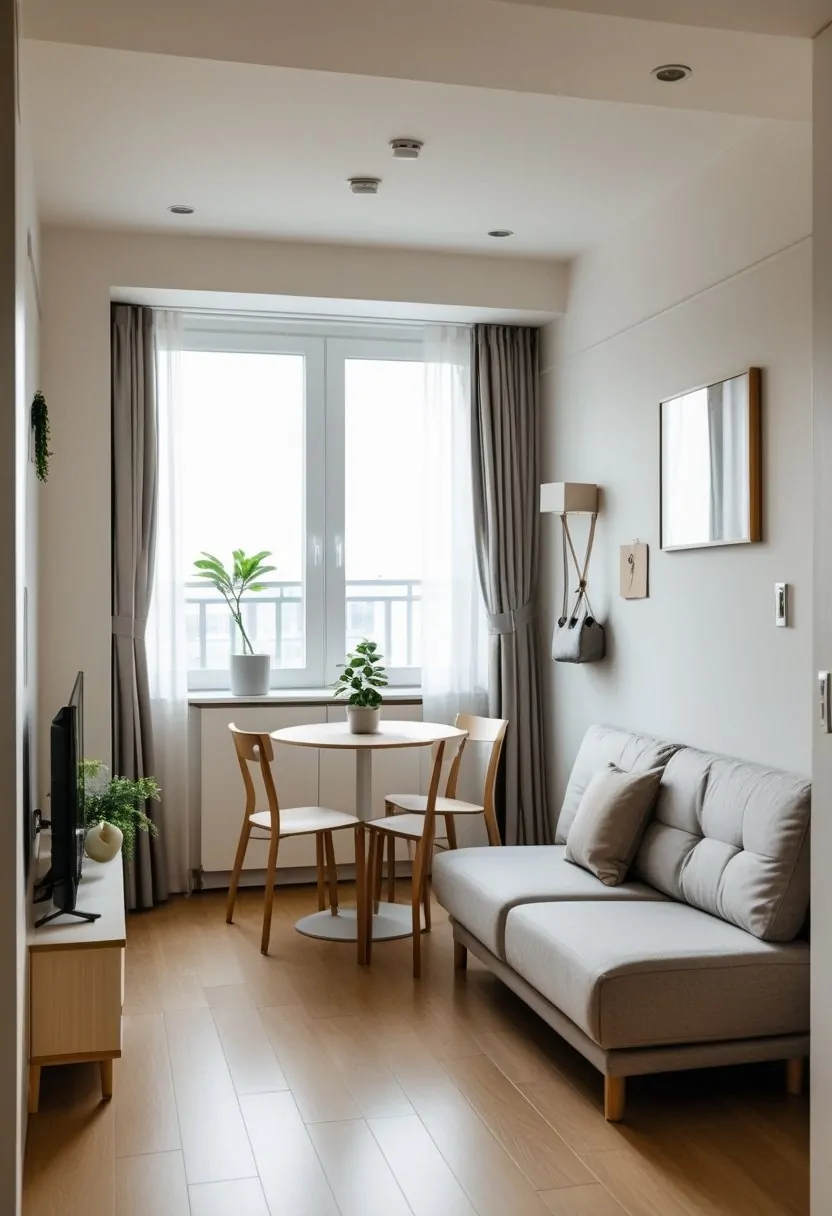
He should keep decor minimal in a small living room with a dining area. Too many items can quickly make the space feel crowded and cramped.
Choosing a few key pieces ensures the room looks neat and organized. It also helps each item stand out without overwhelming the area.
Regularly removing or rotating decor can keep the space fresh and clutter-free. This creates a comfortable, functional environment for both dining and relaxing.
7) Create a seamless flow between living and dining areas
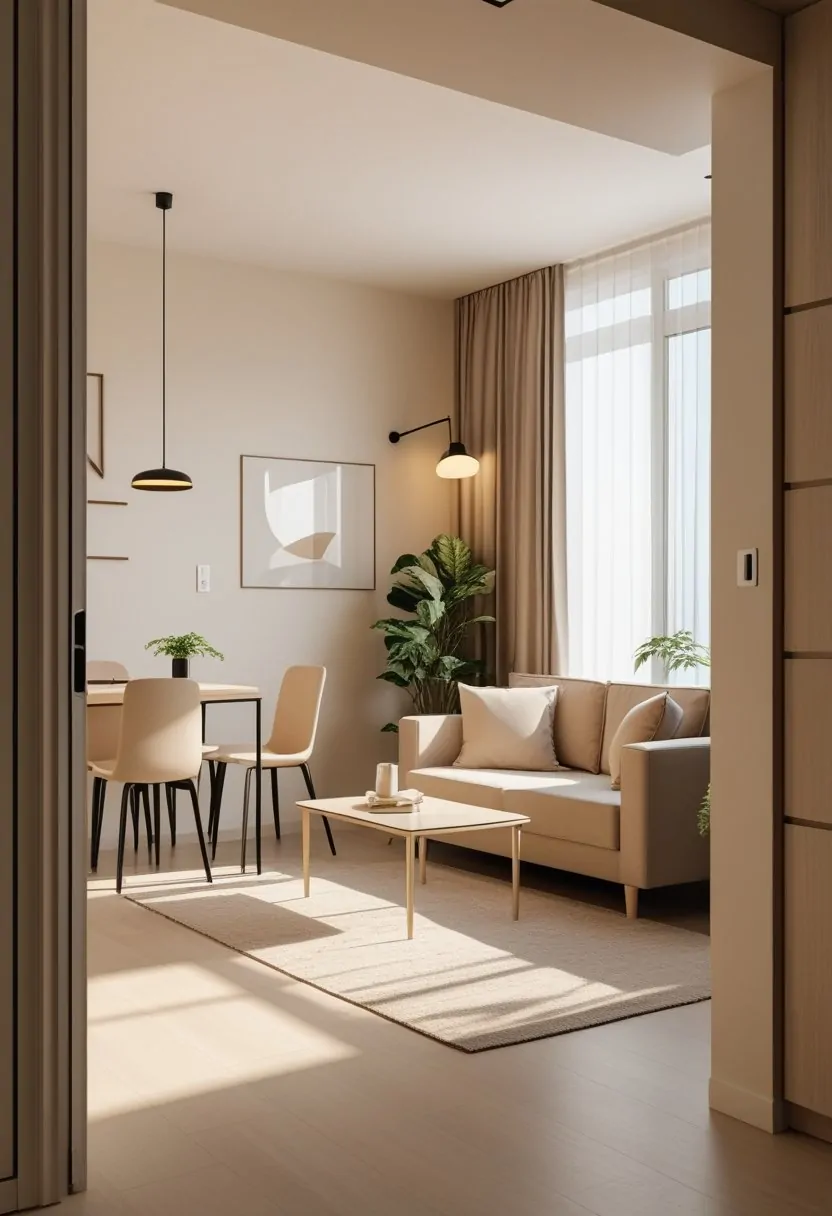
They should use furniture with clean lines to keep the space open and uncluttered. Positioning pieces against walls helps free up walkways and makes the room feel larger.
Using rugs or different flooring materials can define each area without breaking the room’s flow. Matching color schemes also help the two spaces feel connected.
Choosing multi-functional furniture adds flexibility. This approach keeps the small area practical while maintaining a smooth transition between living and dining sections.
Planning a Functional Small Living Room With Dining Area
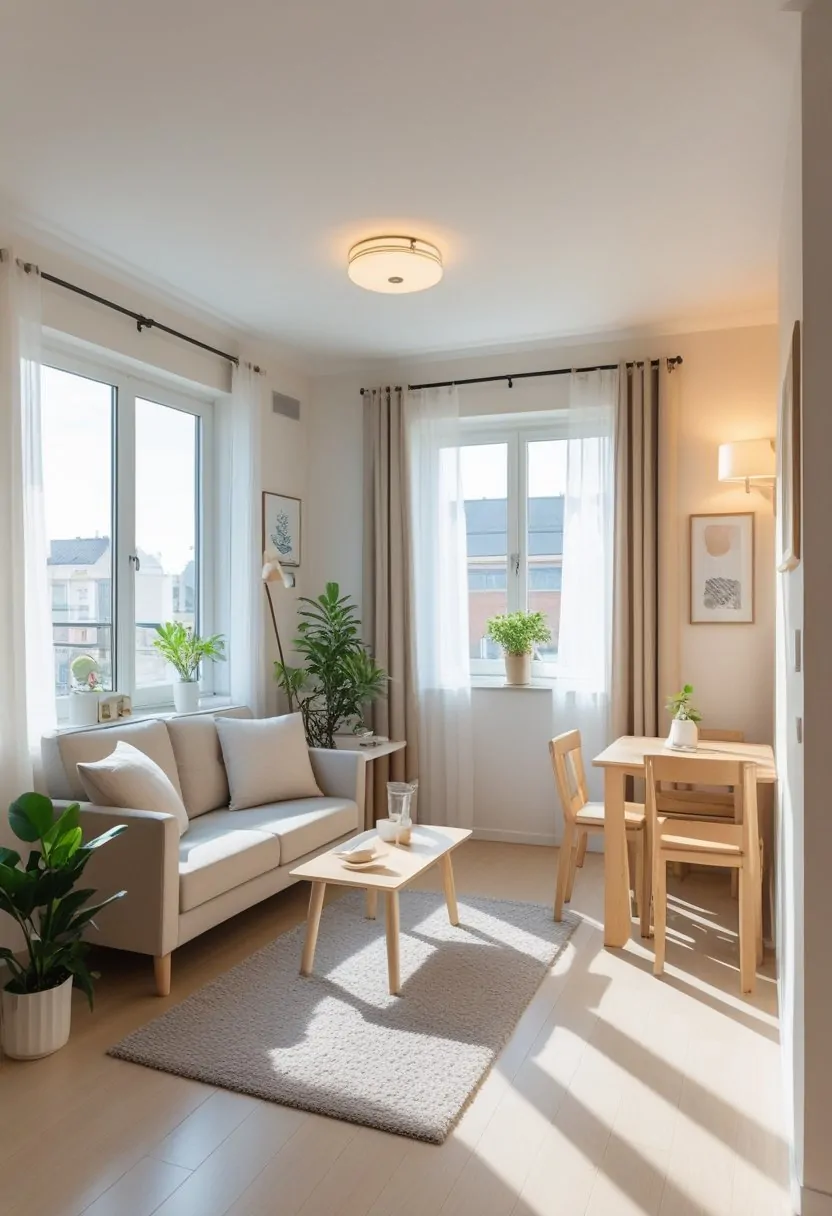
Designing a small living room with a dining area requires careful thought about layout and furniture. It is important to create clear zones and use pieces that save space without making the room feel crowded.
Defining Zones and Layouts
Clear zones help keep the living and dining areas organized and functional. Seating should be arranged to allow easy movement between the two spaces. Using rugs or lighting can visually separate the areas without physical barriers.
An open layout works well to make the room feel larger. Placing the dining table close to a wall or window saves space. Furniture should be arranged to avoid blocking pathways. Avoid putting bulky pieces too close together.
A rectangular or square shape allows for better flow. When the space is narrow, placing the dining table parallel to the room’s longest wall helps. Thoughtful layout reduces clutter and improves comfort.
Space-Saving Furniture Strategies
Choosing the right furniture is key in a small combined room. Multifunctional pieces, such as a dining table that can extend or fold, add flexibility. Chairs that tuck fully under the table free up space when not in use.
Compact sofas with slim arms or armless designs help maximize seating without bulk. Storage ottomans or benches serve dual purposes for seating and holding items. Wall-mounted shelves save floor space and add storage.
Furniture with clean lines and light colors makes the room feel less heavy. Avoid oversized or overly ornate pieces to keep the area open and easy to navigate. Smart furniture choices increase both utility and style.
Lighting and Décor Tips
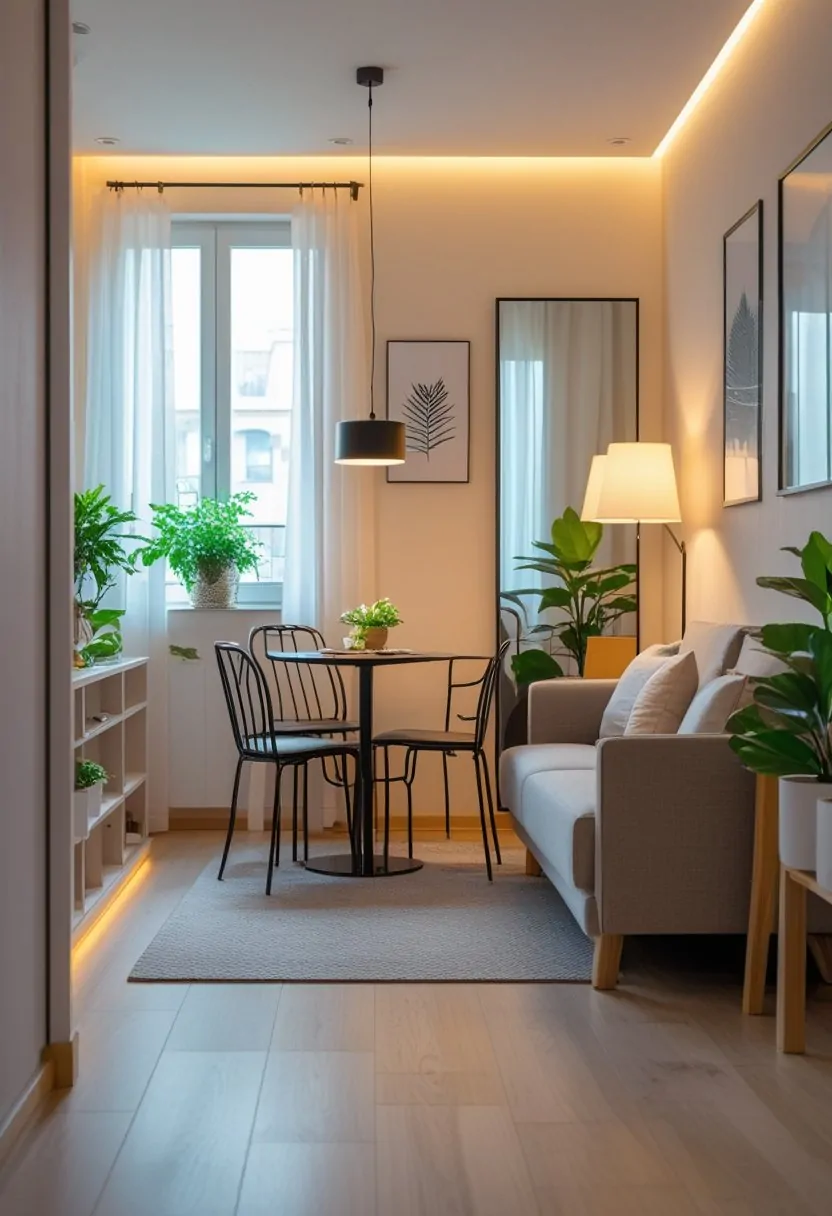
Lighting and décor play a key role in defining a small living room with a dining area. Proper light sources combined with smart décor choices help make the space feel larger and more connected. Choosing the right colors and using natural light efficiently can create a smooth, open flow between both areas.
Maximizing Natural Light
Natural light opens up small spaces, making them feel airy and less cramped. It is essential to keep windows clear of heavy curtains. Instead, sheer or light-colored curtains allow sunlight to enter while maintaining privacy.
Mirrors placed opposite or near windows reflect light around the room. This simple trick doubles the effect of natural light.
Using light, reflective surfaces like glass or light wood furniture also helps bounce light throughout both the living and dining zones.
Layering with adjustable artificial lights, such as dimmable overhead lights or floor lamps, complements natural light for evenings or cloudy days.
Color Choices for Seamless Flow
Color connects the living and dining areas visually and makes the combo space feel unified. Choosing a consistent color palette across both zones helps the eyes move smoothly without interruption.
Neutral tones like soft grays, off-white, or beige work well as base colors. They keep the room bright and adapt easily to different décor styles.
Accent colors can be added in small doses through pillows, rugs, or wall art, creating interest without clutter.
Using similar shades for major furniture pieces in both areas strengthens cohesion. For example, a gray sofa paired with a matching gray dining bench makes the space feel intentional.
Tip: Avoid dark, contrasting colors that break up the visual flow and shrink the room.
Frequently Asked Questions
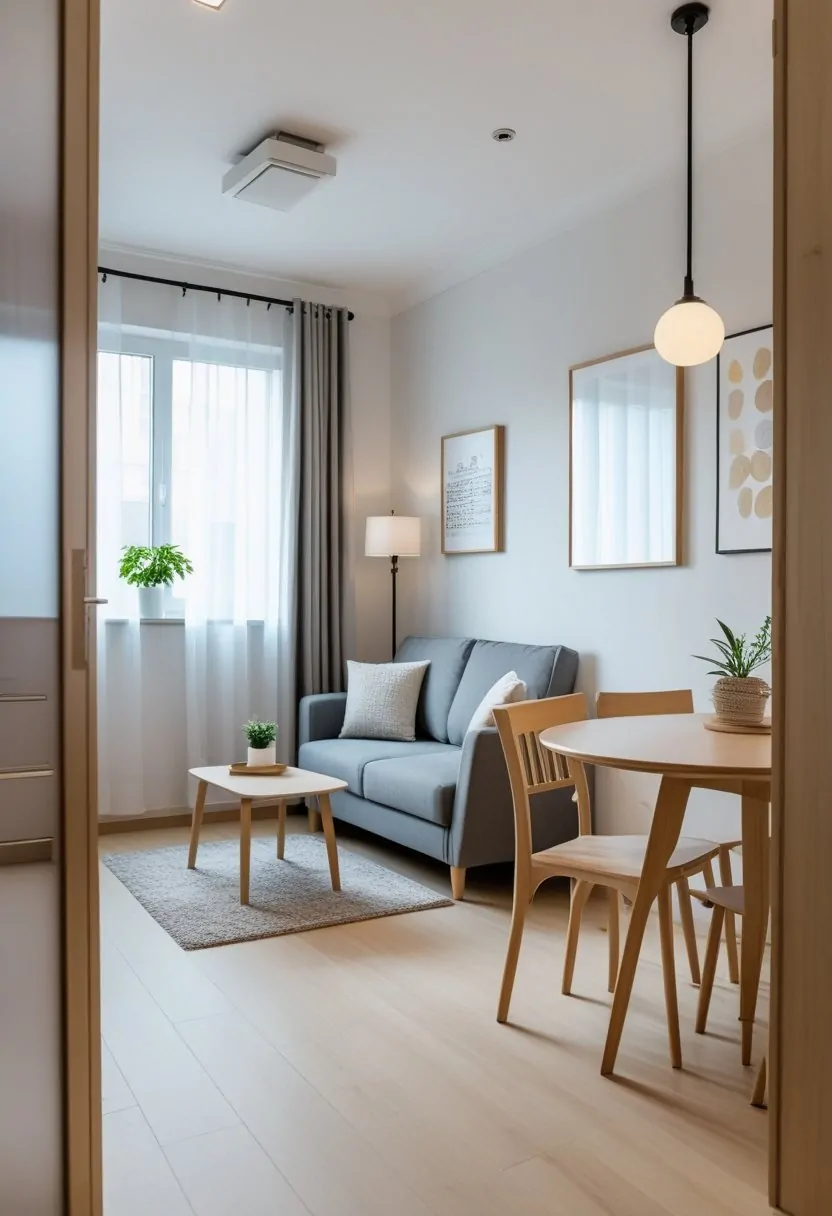
Smart design choices help make a small living room with a dining area look open and functional. Using space-saving furniture and clear zone markers adds style and practicality.
What are the latest trends in decorating a small apartment living room that includes a dining area?
They often use sleek, modern dining tables that take up less space. Light color palettes open up the room, making it feel larger and brighter.
Natural materials like wood or rattan add warmth without clutter. Multi-functional furniture, such as foldable or extendable tables, is popular to maximize the space.
How can you position a TV in a small living room that also serves as a dining area?
The TV should be placed where it is easy to view from both seating areas and the dining table. Wall-mounting the TV saves floor space.
Low-profile furniture or TV stands keep sightlines clear and avoid blocking views. Positioning the TV near a corner can reduce interference with dining activities.
What creative solutions can be used to divide a living room and dining area in a small space?
Using rugs or changes in flooring helps define each area without walls. Open shelving or low partitions create separation but keep the space airy.
Furniture placement can act as a natural divider, like arranging a sofa to back the dining area. Lightweight screens or curtains offer flexibility to change the layout when needed.

